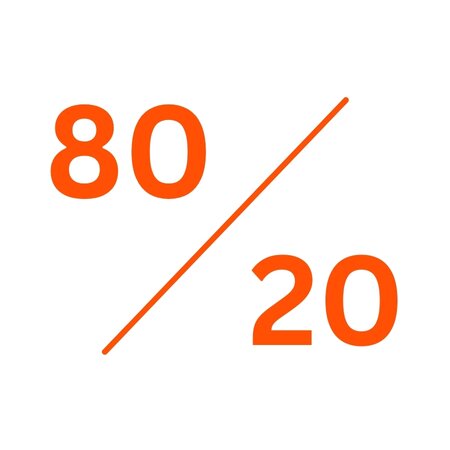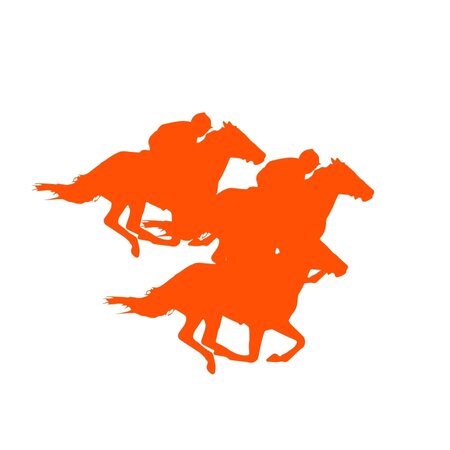Horse Racing Betting Guide and Strategies
Our Best Betting Strategies for Horse Racing:
Best Horse Racing Betting Strategies
A good horse betting strategy can help you make smarter picks and win more money. Most strategies focus on picking the right type of bet based on how each horse is expected to perform in the race.
Below, we’ve listed our favorite horse racing betting strategies. These tips show different ways to place your bets, depending on which horses you like in each race.
Dutching Horse Racing Betting Strategy
Dutching is perhaps the most popular horse racing bet strategy for beginners because it enhances your chance of winning a bet.

How Does Dutching Work?
Dutching works by betting on more than one horse to win the same race. This enhances your chance of earning a return, even if you are guaranteed to lose at least one bet.
Example: You bet $10 on This One Will Win at +500 and $10 on Good Feeling at +600 in the same race. Your total stake is $20, but you could win between $50 and $60. You now have two horses in the race who both stand a good chance of winning.
Pros of Dutching
Dutching is great for new horse racing bettors who are starting to experiment with bet styles beyond a simple win bet. It’s also an easy strategy:
- Place a first bet on a horse to win the race.
- Make a second selection in your chosen racebook.
This strategy introduces bettors to two things: risk and profit margins.
A Dutching strategy is naturally risky because you accept you will lose at least one bet. However, it also helps educate bettors on how to chase profit. If you’re confident that only two horses have a chance in the Preakness Stakes, then backing both runners to win covers more eventualities.
Cons of Dutching
The biggest drawback to Dutch betting on horse racing is that you are guaranteed to lose at least one bet. You also run the risk of losing multiple bets on the same race. This could lead to a heavy loss and could affect your ability to wager on future races.
80-20 Horse Racing Betting Strategy
The 80-20 is an evolved form of Dutching and is the best betting strategy for horse racing when it comes to covering your back. The idea is to split your total stake between two horses, but weigh 80% on one and 20% on the other.

How Does 80-20 Betting Work?
80-20 betting requires you to wager on two horses. This can either be in the same race, which makes it a form of Dutch bet, or it could be across two races, which makes it a double bet.
Bettors split their stake so that 80% goes on the short-priced horse, and 20% backs the outsider. The idea is to match up your profit potential on both horses, so you win roughly the same cash on whichever runner comes first.
Example: You plan to stake $100 on a race and split it like this:
- $80 on Clear Favorite at +200
- $20 on Outside Hopeful at +800
No matter which horse wins, you’ll earn $160. One horse has to win in order to secure a return, but you have widened your chances.
Pros of 80-20 Betting
80-20 betting is ideal if you want a level of insurance in a race. If you feel like the favorite will probably win but still realize it’s worth throwing 20% of your stake on an outsider.
It’s also a good method when betting on multiple races.
Cons of 80-20 Betting
The big drawback to 80-20 betting is the same as any Dutch bet: you could lose it all. This is particularly common in a race where there are three or four favorites to win.
Laying the Favorite Horse Racing Betting System
Laying the favorite means you’re betting against a horse to win. It’s a strong alternative to betting on other horses. You’re likely to lock in a good price, because the favorite’s odds will be the shortest. However, there is a bigger risk involved.

How Does Laying the Favorite Work?
A lay bet is when you wager against something happening. In this instance, you wager on the favorite not winning. Your liability is not set by your stake, but by the odds.
Example: You lay $100 on Quick Jimmy at odds of +400. If Quick Jimmy loses, you win $100. If he wins, you will lose $400.
Pros Oo Lay Betting
Lay betting is great if you are confident a hot favorite will not win a race. They can sometimes be easy to spot. You might see a horse’s odds tumble into the negative before a race as other bettors throw their cash toward it. The horse’s odds might become so artificially depressed that you think it’s worth the risk of laying.
It’s also easier to pick a loser than a winner in horse racing. You could risk a lot of money laying a big outsider, to win a few dollars. Some bettors use this method to earn hundreds of small wins.
Cons of Lay Betting
Exposure is the big problem in lay betting. If you lay $100 on Slow Freddie at +1300 and he wins, then you owe your racebook $1300. Expert bettors factor in this liability when they place lay bets. We encourage new bettors to think carefully before laying.
Lay betting can be a great method for earning quick, small profits when gambling against a no-hoper. However, the liability involved if that outsider wins the race is huge. We advise bettors to use this method with caution.
Pick 3 Horse Racing Betting Strategy
Placing a Pick 3 bet involves selecting three horses from three separate races to win. Your bet only pays out if all three horses finish first. It’s a step up from a Daily Double and one of the least complicated multiple bets available. It can also prove very, very profitable.

How Does Pick 3 Betting Work?
A Pick 3 bet requires you to back the winners in three consecutive races. In doing so, you multiply your potential profits.
Example: You wager on the following horses:
- Race 1 – Gonna Win This One at +400
- Race 2 – Streets Ahead at +300
- Race 3 – Sure Champ at +300
You’d earn an $8000 return from a $100 wager if all three selections win. Had you wagered $100 on each race, you’d have won just $1000 overall and risked $300 in bets.
Pros of Pick 3 Betting
The Pick 3 strategy is ideal for squeezing extra value from your bets. You can back three heavy favorites together and get higher odds compared to three single bets. Your profit potential can skyrocket.
Cons of Pick 3s
The drawback to a Pick 3 bet is that you have no insurance if one selection loses. We suggest bettors think hard about their choices, because just one loss results in your entire bet losing.
Show Bet Horse Racing Betting System
Show bets carry the least risk in horse racing and are the ideal first wager for new players. These bets are easy to make and it’s not necessary for your horse to win in order to secure profit.

How Does A Show Bet Work?
When you place a show bet, you wager on a horse finishing first, second, or third. It doesn’t matter where it finishes as long as it’s in the top three. Your odds are smaller than a single or place bet, because there’s a greater chance of your wager winning.
Pros of a Show Bet
Bettors often use a show bet strategy to make a small, but regular, profit. The idea is to back favorites, or near-favorites, to finish in the top three at small odds. Your payout won’t break the bank, but you will score a return. Keep doing this over eight or nine races and your balance should steadily grow.
You could also use this strategy for wagering on outsiders, in the hope they sneak into third place and land you a big windfall. This is a riskier strategy, but the profit margins are much greater. It all depends on your level of risk.
Cons of Show Betting
The main drawback to show betting is that you get much smaller odds, compared to a win or place bet. We encourage bettors to weigh risk and reward. Is backing a horse at -400 to finish first, second, or third really worth it?
Trifecta Horse Racing Betting Strategy
Trifectas are one of the most difficult horse racing betting strategies. The aim is to predict the first, second, and third-place finishers in the exact order. This is no easy feat and even the pros struggle to do this. However, the profit margins are so good that many bettors rely on trifecta strategies to drive their winnings.

How Does a Trifecta Strategy Work?
Trifectas require you to pick the first, second, and third-place finishers in the correct order. It’s difficult enough to pick a winner, let alone the horses that will finish behind. Your bet slip will allow you to make the selections and enter your stake, which covers the entire wager. The odds are dependent on the price of each horse, multiplied together.
Strategists often use trifectas on simple, short track races with few runners.
Example: Only six horses run in the Arlington Stakes. It’s easier to build a trifecta here compared to the 20-horse Kentucky Derby.
Pros of Trifecta Betting
The main reason bettors use a trifecta strategy is because the size of the odds is huge. You can wager small amounts on multiple trifectas, win just one of them, and still walk away with a profit.
The size of the odds also means that low-budget players can test their luck on a trifecta without wiping themselves out. The high odds carry high risk, but bettors can mitigate this by reducing their stake.
Cons of Trifectas
The obvious drawback with trifectas is they are notoriously difficult to get right. Expert bettors can go days without landing a successful trifecta. We recommend that you have a sensible look at your budget and make sure you don’t risk too much on a single race.
Trifectas also rely on the big favorites coming good. Rarely will you throw an outsider into a trifecta, because they will likely ruin it. However, not all favorites live up to their rating, and there’s nothing more frustrating than seeing a high-odds horse beat your dead-cert to ruin your bet.
Building Your Horse Racing Betting Strategy
The strategies above are not the only ways to bet on horse racing effectively. If you plan to build your own horse racing gambling strategy, we have some additional resources to help you create your new system:
Find The Best Horse Racing Sportsbook We’ve tested and reviewed the best horse racing betting sites, so you can find your perfect match.
How To Bet On Horse Racing Discover the basics of betting on horse racing in our quick and easy guide.
Exotic Horse Racing Bets Learn about the more complex horse racing wagers, and how to maximize your payday.

Expert Tip: Don't Bet on Every Race
Horse racing can be exciting, and it’s tempting to bet on every race throughout the day. But we recommend being selective as a single track might host 10 or more races on a typical race day.
Instead of spreading yourself thin, focus on races where you have a solid understanding of the horses, jockeys, trainers, and track conditions. This will allow you to make more informed decisions and allocate your bankroll strategically.
Horse Racing Tips for Beginners and Experts
Whether you’re brand new to horse racing, or are a seasoned pro on the tracks, it’s a good idea to study up on the basics and keep the following factors in mind when wagering on horse racing.

Understand Horse Racing Bet Types
We recommend that beginners start with straight bets, also known as win, place, show and then try out exotic bets as you improve your betting skills. Exotic bets are focused on choosing multiple horses, while straight bets are the most straightforward, allowing you to get comfortable with the horse racing betting process. Once you’re experienced, you can gradually explore more complex exotic bets like exactas, trifectas, and daily doubles.

Use Bankroll Management Systems
To start, determine a realistic amount that you’re comfortable spending on horse racing bets. This should be a separate entertainment budget and not essential funds. Stick to your budget and establish a wagering strategy (e.g. 1-5% of bankroll) of your total budget per bet. If you have a cold streak, consider changing your research and wagering strategies to turn things around.
Research Every Horse's Recent Form
Certain horses have preferences for specific track lengths. Some perform better on shorter tracks (sprints), while others excel on longer distances (routes). Additionally, each horse has a unique running style that will affect it’s performance out of the gate, so be sure to research your horse’s particular style. Cross-referencing this with additional info (gate number, track condition, etc.) can have great returns.

Look Up Jockey and Trainer History
The jockey is an essential part of the racing team, and their skill can significantly impact a horse’s performance. Looking for jockeys with a history of winning races on similar tracks can give you valuable insight. In the same vein, trainers develop personalized training programs that include diet, exercise schedules, and track work to get the horse in peak physical condition for the specific race distance and surface. Verify how long your horse’s trainer has been working with them, and check previous results.
Do Horse Racing Betting Strategies Work?
Using a strategy when betting on horse racing doesn’t guarantee profit, but it can help improve your chances of winning and reduce your exposure to risk. Trying out different systems and wagers, from Dutching to Show betting, will give you the opportunity to see what works best for your betting style and budget.
Whether you’re a beginner or an experienced bettor, these horse race betting strategies will help you make the smartest decision when betting on horses. Good luck! We’re rooting for you!



